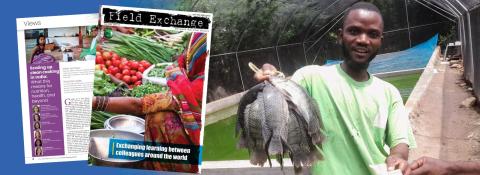Impacts of cash transfers on maternal and child health outcomes in sub-Saharan Africa
This is a summary of the following article: Ngamasana E & Moxie J (2024) Cash transfer, maternal and child health outcomes: A scoping review in sub-Saharan Africa. Global Health Action, 17, 1, 2309726. https://doi.org/10.1080/16549716.2024.2309726
Cash transfer programmes are poverty alleviation interventions that policymakers and funders can draw on to improve maternal and child health outcomes in low- and middle-income countries. There is, however, a lack of evidence on the effectiveness of such programmes to positively impact these outcomes. Most evaluations tend to focus on the utilisation of healthcare services and other social determinants of health. Specific health outcomes related to mortality, individuals’ capacity to function, or the subjective sense of well-being are often overlooked. In a time of competing priorities, the allocation of scarce resources needs to rely on a strong evidence base. The authors therefore conducted a review of evidence in sub-Saharan African countries, where there are substantial operational differences with other regions (e.g. Latin America).
Authors synthesised current empirical evidence by searching PubMed Central and Google Scholar and supplemented this database search with a backward citation search for studies conducted in sub-Saharan Africa for the period 2000–2021. They identified 21 peer-reviewed articles that reported on studies conducted in six sub-Saharan African countries – Malawi, Kenya, South Africa, Nigeria, Tanzania, and Zambia.
Among the 21 articles included, only one reported on mortality. In this study from Nigeria, the provision of cash transfers was associated with substantial increases in child survival that was driven by a large decrease in foetal deaths (a 29% absolute decrease in the treatment group compared to the control). Potential causal mechanisms included conditionalities attached to the cash payment, whereby pregnant women had to attend at least three antenatal care visits, a health facility delivery, and one postnatal visit.
Thirteen articles reported on health outcomes related to individual capacities to function – episodes of illness, assessment of depressive symptoms, and incidence of HIV and herpes virus. Participants who received conditional cash transfers reported reduced likelihood of illness episodes in the past 30 days and reduced likelihood of difficulties in performing normal activities due to illness. Lack of conditional cash transfers was associated with higher school dropouts, which in turn were associated with a higher risk of HIV and herpes. Unconditional cash transfers were associated with a lower likelihood of reporting depressive symptoms.
Three studies reported outcome measures related to participants’ well-being. Unconditional cash transfer programmes were found to be associated with improved quality of life and studies reported positive effects on a few subjective outcomes such as self-reported overall satisfaction with life.
Protective health promoting behaviours were reported in four of the articles. Three studies reported a positive effect of conditional cash transfer programmes on the incidence of HIV and other sexually transmitted infections through behavioural mechanisms. One study reported an increased likelihood of receiving the tetanus toxoid vaccine during the perinatal period.
The main limitation of this review was the limited number of studies reporting on some of the outcomes of interest. However, the quality of evidence was high as most studies were randomised controlled trials. Overall, the review suggests that conditional cash transfer programmes are effective in improving child survival and functional health status and in promoting healthy behaviours, whereas unconditional cash transfers are more effective for impacting measures of well-being.


